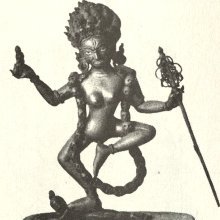Dvadasha, Dvādaśa, Dvādaśan, Dvadasa, Dvādasa, Dvadashan: 33 definitions
Introduction:
Dvadasha means something in Buddhism, Pali, Hinduism, Sanskrit, Jainism, Prakrit, Marathi, Hindi. If you want to know the exact meaning, history, etymology or English translation of this term then check out the descriptions on this page. Add your comment or reference to a book if you want to contribute to this summary article.
The Sanskrit terms Dvādaśa and Dvādaśan can be transliterated into English as Dvadasa or Dvadasha or Dvadasan or Dvadashan, using the IAST transliteration scheme (?).
Alternative spellings of this word include Dwadash.
Images (photo gallery)
In Hinduism
Purana and Itihasa (epic history)
Source: archive.org: Shiva Purana - English TranslationDvādaśa (द्वादश, “twelve”) refers to “twelve things to be given”, as defined in the Śivapurāṇa 1.15. Accordingly, “[...] there are twelve things (dvādaśa) to be given in the twelve months beginning with Caitra or all together on an auspicious occasion for the flourishing of what is cherished. They are:—(1) cow, (2) plots of land, (3) gingelly seeds, (4) gold, (5) ghee, (6) cloth, (7) food-grains, (8) jaggery, (9) silver, (10) salt, (11) ash gourd and (12) a virgin. Gift of cows, milk-products, cow-dung (in the form of manure etc.) ward off the sins accruing from wealth and grain while sins connected with water, oil etc. are warded off by cow’s urine”.
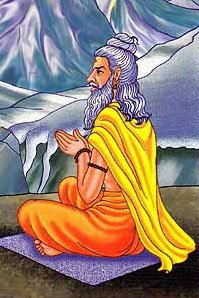
The Purana (पुराण, purāṇas) refers to Sanskrit literature preserving ancient India’s vast cultural history, including historical legends, religious ceremonies, various arts and sciences. The eighteen mahapuranas total over 400,000 shlokas (metrical couplets) and date to at least several centuries BCE.
Shaktism (Shakta philosophy)
Source: Google Books: Manthanabhairavatantram1) Dvādaśa (द्वादश) [Cf. Dvādaśaka] or Dvādaśāṅgula refers to “twelve” (e.g., twelve fingers’ space), according to the Manthānabhairavatantra, a vast sprawling work that belongs to a corpus of Tantric texts concerned with the worship of the goddess Kubjikā.—According to the Ṭīkā the length of the body is eighty-four finger-spans up to the end of the head. Beyond that is the place of the Triple Peak Mountain—Trikūṭa—that covers twelve fingers’ space [i.e., aṅgula-dvādaśaka] and is the End of the Twelve. Together they cover a distance equivalent to the width of ninety-six fingers.
2) Dvādaśa (द्वादश) or Dvādaśaśloka refers to the “twelve verses”, according to the Manthānabhairavatantra.—Accordingly, “[...] salute with (my) head that goddess, the venerable Kulālī who, like the rays of the moon, is the first path of Vṛkṣasiddha (the First Teacher). Like the (most excellent) quality of nectar, she is the wealth of grace attained—she who is conjoined to the one and sole abode (of the supreme). Residing in the Twelve Knots [i.e., dvādaśa-granthi], she is like the young (dawning) sun of the Twelve Verses [i.e., dvādaśa-śloka—ślokānāṃ dvādaśānāṃ], impurity quelled, she is Kuṇḍalinī”.
3) Dvādaśa (द्वादश) or Dvādaśagranthi also refers to the “twelve knots” (Cf. previous definition).
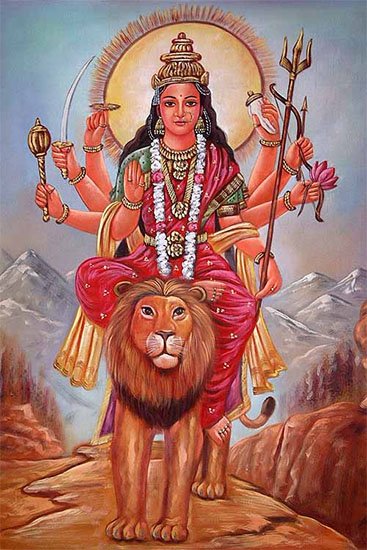
Shakta (शाक्त, śākta) or Shaktism (śāktism) represents a tradition of Hinduism where the Goddess (Devi) is revered and worshipped. Shakta literature includes a range of scriptures, including various Agamas and Tantras, although its roots may be traced back to the Vedas.
Yoga (school of philosophy)
Source: Brill: Śaivism and the Tantric Traditions (yoga)Dvādaśa (द्वादश) refers to the “twelve (digits)” (of the sun), according to the Amṛtasiddhi, a 12th-century text belonging to the Haṭhayoga textual tradition.—Accordingly, “The sphere of the sun is at the base of the Central Channel, complete with twelve digits (kalā-dvādaśa), shining with its rays. The lord of creatures (Prajāpati), of intense appearance, travels upwards on the right. Staying in the pathways in the spaces in the channels it pervades the entire body. The sun consumes the lunar secretion, wanders in the sphere of the wind and burns up all the bodily constituents in all bodies”.
Source: ORA: Amanaska (king of all yogas): A Critical Edition and Annotated Translation by Jason Birch1) Dvādaśan (द्वादशन्) refers to “twelve (days)”, according to the Amanaska Yoga treatise dealing with meditation, absorption, yogic powers and liberation.—Accordingly, as Īśvara says to Vāmadeva: “[...] [Now], I shall define the nature of that highest, mind-free absorption which arises for those devoted to constant practice. [...] By means of an absorption for a period of twelve days (dvādaśa-ahan), the state of moving across the earth is achieved. Within half the time [it takes to] blink an eyelid, [the Yogin can] travel [anywhere] around the world. [...]”.
2) Dvādaśa (द्वादश) refers to “twelve (years)” (of Yogic breathing exercises), according to the Śivayogadīpikā, an ancient Sanskrit text dealing with Yoga possibly corresponding to the Śivayoga quoted in Śivānanda’s Yogacintāmaṇi.—Accordingly, [while describing a sequence of Haṭhayoga practices]: “Thus, by means of this Haṭhayoga which has eight auxiliaries, those [students who are] life-long celibates obtain the Siddhis of the [best of Sages] because of their untiring practice. [...] In the twelfth year, he is an equal to Śiva and he himself is the creator and destroyer [of the universe]. Thus, within twelve years (dvādaśa-varṣa), he easily becomes a perfected one of steady mind because of his devotion at the feet of the true lord of gurus. This is well attested. [...]”.
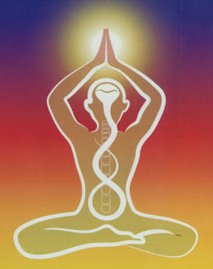
Yoga is originally considered a branch of Hindu philosophy (astika), but both ancient and modern Yoga combine the physical, mental and spiritual. Yoga teaches various physical techniques also known as āsanas (postures), used for various purposes (eg., meditation, contemplation, relaxation).
Vastushastra (architecture)
Source: Brill: Śaivism and the Tantric Traditions (architecture)Dvādaśa (द्वादश) refers to “twelve (digits)”, according to the Devyāmata (in the section śalyoddhāra-paṭala or “excavation of extraneous substances”).—Accordingly, “[...] If [someone] scratches his foot, [the officiant] should prognosticate an extraneous thing related to an elephant [, i.e. a born of an elephant]. He should remove the extraneous thing, i.e. a thorn [at a depth of] twelve digits (dvādaśa-aṅgula-māna) [underground]. If [someone] scratches his big toe, [the officiant] should prognosticate an extraneous thing, i.e. a piece of chalk. Alternatively, he should prognosticate a piece of iron mixed with various calxes of brass there. [...] ”.
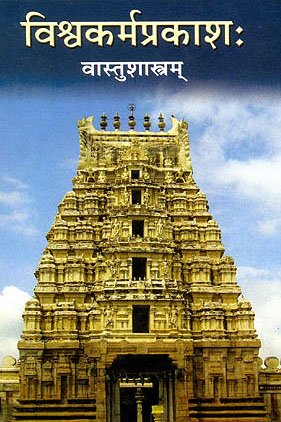
Vastushastra (वास्तुशास्त्र, vāstuśāstra) refers to the ancient Indian science (shastra) of architecture (vastu), dealing with topics such architecture, sculpture, town-building, fort building and various other constructions. Vastu also deals with the philosophy of the architectural relation with the cosmic universe.
Shilpashastra (iconography)
Source: academia.edu: Dvādaśa-mūrti in Tamil Tradition (iconography)Dvādaśan (द्वादशन्) or Dvādaśamūrti refers to the “twelve sacred names of Viṣṇu”, whose iconographical details are mentioned in the Śrītattvanidhi (verse 2.19-42) citing the Pāñcarātrāgama-Kriyapāda. The Caturviṃśatimūrtilakṣaṇa fixes the emblems in the following pattern (clockwise from right parahasta to left parahasta, left pūrvahasta and right pūrvahasta).
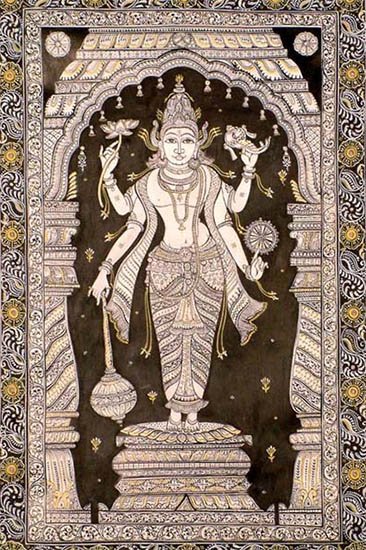
Shilpashastra (शिल्पशास्त्र, śilpaśāstra) represents the ancient Indian science (shastra) of creative arts (shilpa) such as sculpture, iconography and painting. Closely related to Vastushastra (architecture), they often share the same literature.
In Buddhism
Mahayana (major branch of Buddhism)
Source: Wisdom Library: Maha Prajnaparamita SastraDvādaśa (द्वादश) refers to the “twelve (causes)”, according to Mahāprajñāpāramitāśāstra (chapter 4).—Accordingly, “[Question: Why is the Buddha called Sugata?]—[Answer]: [...] He alone knows who can be saved, who is sick or weakened, what each one needs to be saved, to whom it is suitable to preach generosity (dāna) or discipline (śīla) or nirvāṇa, to whom he can expound the system (dharma) of the five elements (pañcaskandha), the twelve causes (dvādaśa-hetupratyaya) or the four truths (caturāryasatya), etc., in order to introduce them into the Path. It is under aspects such as these that he knows the extent of knowledge (jñānabala) of his disciples and that, consequently, he preaches the doctrine. This is why he is called Sugata, well-spoken”.
Source: academia.edu: A Study and Translation of the GaganagañjaparipṛcchāDvādaśa (द्वादश) refers to “twelve” (e.g., ‘the twelve links of dependent origination’), according to the Gaganagañjaparipṛcchā: the eighth chapter of the Mahāsaṃnipāta (a collection of Mahāyāna Buddhist Sūtras).—Accordingly, “[...] The sphere of mind (manas) is the realm of the Buddha, and in the realm of the Buddha there is no nearness or farness. Why is that? This is because the realm of the Buddha is the transcendent realm, and the transcendent realm is beyond the realm of mind. It is the same case with the parts of personality, spheres, fields of sense perception, and the twelve links of dependent origination (dvādaśa-aṅga-pratītyasamutpāda). In this way, son of good family, the Bodhisattva enters into every realm as transcendent, and belonging to the realm of the Buddha. [...]”.
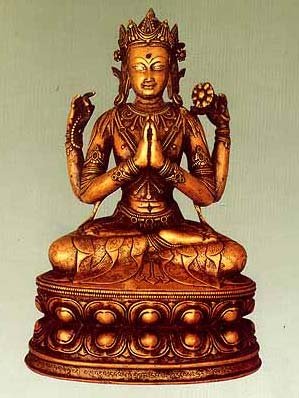
Mahayana (महायान, mahāyāna) is a major branch of Buddhism focusing on the path of a Bodhisattva (spiritual aspirants/ enlightened beings). Extant literature is vast and primarely composed in the Sanskrit language. There are many sūtras of which some of the earliest are the various Prajñāpāramitā sūtras.
Tibetan Buddhism (Vajrayana or tantric Buddhism)
Source: MDPI Books: The Ocean of HeroesDvādaśa (द्वादश) refers to the “twelve (levels)” (of Bodhisattvas) (dvādaśabhūmi).—In the Ḍākārṇava 15, the pure nature (śuddhi) of the Herukamaṇḍala is expressed by doctrinal concepts from various Buddhist traditions (which is a general mode of explaining the purity of the maṇḍala in Buddhist Tantrism). The Heruka maṇḍala also represents these Buddhist concepts, e.g., the twelve levels of Bodhisattvas (dvādaśa-bhūmi).
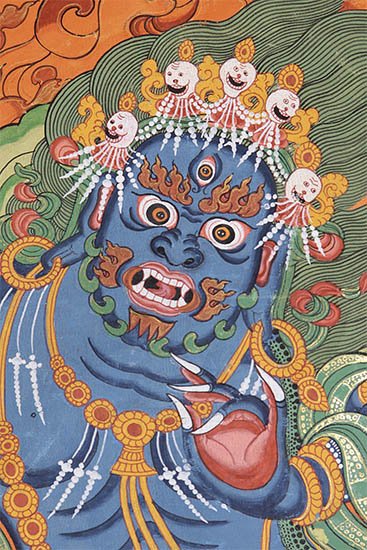
Tibetan Buddhism includes schools such as Nyingma, Kadampa, Kagyu and Gelug. Their primary canon of literature is divided in two broad categories: The Kangyur, which consists of Buddha’s words, and the Tengyur, which includes commentaries from various sources. Esotericism and tantra techniques (vajrayāna) are collected indepently.
In Jainism
General definition (in Jainism)
Source: The University of Sydney: A study of the Twelve ReflectionsDvādaśa (द्वादश) refers to the “twelve (pure reflections)”, according to the Praśamaratiprakaraṇa 149-50 (p. 93-4).—Accordingly, “(A monk) should reflect, upon transcient [sic] nature of the world, helplessness, loneliness, separateness of the self from non-self, impurity (of the body), cycle of births sand [sic] rebirths, inflow of Karmas and stoppage of inflow of Karmas; Shedding of stock of Karmas, constitution of the universe, nature of true religion, difficulty in obtaining enlightenment, which are (called) twelve pure Bhāvanās (reflections) [i.e., dvādaśa-bhāvanā]”.
Note: The entry in Monier-Williams s.v. bhāvanā includes “reflection, contemplation”. In the later Jain texts, especially among Śvetāmbara sources, bhāvanā was used interchangeably with, or instead of, anuprekṣā. The verse quoted at the beginning of this section shows how Śubhacandra’s text is an example of this usage since there anuprekṣā is a reference to the twelve reflections, dvādaśa-bhāvanā.

Jainism is an Indian religion of Dharma whose doctrine revolves around harmlessness (ahimsa) towards every living being. The two major branches (Digambara and Svetambara) of Jainism stimulate self-control (or, shramana, ‘self-reliance’) and spiritual development through a path of peace for the soul to progess to the ultimate goal.
Languages of India and abroad
Pali-English dictionary
Source: BuddhaSasana: Concise Pali-English Dictionarydvādasa : (adj.) twelve.
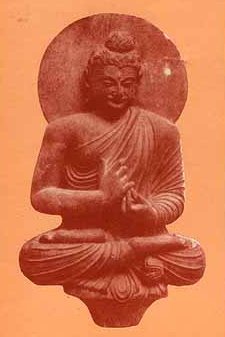
Pali is the language of the Tipiṭaka, which is the sacred canon of Theravāda Buddhism and contains much of the Buddha’s speech. Closeley related to Sanskrit, both languages are used interchangeably between religions.
Marathi-English dictionary
Source: DDSA: The Molesworth Marathi and English Dictionarydvādaśa (द्वादश).—a (S) Twelve or twelfth.
Source: DDSA: The Aryabhusan school dictionary, Marathi-Englishdvādaśa (द्वादश).—a Twelve or twelfth.
Marathi is an Indo-European language having over 70 million native speakers people in (predominantly) Maharashtra India. Marathi, like many other Indo-Aryan languages, evolved from early forms of Prakrit, which itself is a subset of Sanskrit, one of the most ancient languages of the world.
Sanskrit dictionary
Source: DDSA: The practical Sanskrit-English dictionaryDvādaśa (द्वादश).—&c. See under द्वि (dvi).
See also (synonyms): dvāja, dvātriṃśat.
Source: Cologne Digital Sanskrit Dictionaries: Shabda-Sagara Sanskrit-English DictionaryDvādaśa (द्वादश).—mf. (-śaḥ-śī) Twelfth. f. (-śī) The twelfth day of the half month E. dvādaśan, and ṭac aff.
Source: Cologne Digital Sanskrit Dictionaries: Shabda-Sagara Sanskrit-English DictionaryDvādaśan (द्वादशन्).—mfn. plu. (-śa) Twelve. E. dvā for dvi two, and daśan ten.
Source: Cologne Digital Sanskrit Dictionaries: Benfey Sanskrit-English DictionaryDvādaśa (द्वादश).—[dvā-daśa], I. ordln. numb., f. śī, Twelfth, [Mānavadharmaśāstra] 2, 36; 7, 130. Ii. f. śī, The twelfth day of the half-month, [Kathāsaritsāgara, (ed. Brockhaus.)] 26, 4.
Source: Cologne Digital Sanskrit Dictionaries: Benfey Sanskrit-English DictionaryDvādaśan (द्वादशन्).—[dvā-daśan], numeral, Twelve, [Mānavadharmaśāstra] 5, 134.
— Cf. [Latin] duodecim.
Source: Cologne Digital Sanskrit Dictionaries: Cappeller Sanskrit-English DictionaryDvādaśa (द्वादश).—[feminine] ī the twelfth, consisting of twelve; [neuter] the number twelve or an aggregate of 12.
Source: Cologne Digital Sanskrit Dictionaries: Cappeller Sanskrit-English DictionaryDvādaśan (द्वादशन्).—[adjective] [plural] twelve.
--- OR ---
Dvādaśan (द्वादशन्).—[adjective] [plural] twelve.
Source: Cologne Digital Sanskrit Dictionaries: Monier-Williams Sanskrit-English Dictionary1) Dvādaśa (द्वादश):—[=dvā-daśa] [from dvā] a See below.
2) [=dvā-daśa] [from dvā] 1. dvā-daśa mf(ī)n. the twelfth, [Vājasaneyi-saṃhitā; Śatapatha-brāhmaṇa; Manu-smṛti; Mahābhārata] etc. ([dual number] the eleventh and twelfth, [Kāṭhaka])
3) [v.s. ...] ifc. (f(ā). ) forming 12 with (cf. aśva- [additions])
4) [v.s. ...] consisting of 12, 12 fold, [Ṛg-veda; Śatapatha-brāhmaṇa]
5) [v.s. ...] increased by 12 [Kātyāyana-śrauta-sūtra]
6) [=dvā-daśa] [from dvā] n. a collection or aggregate of 12 [Śatapatha-brāhmaṇa]
7) [=dvā-daśa] [from dvā] 2 for -daśan in [compound]
Source: Cologne Digital Sanskrit Dictionaries: Monier-Williams Sanskrit-English Dictionary1) Dvādaśan (द्वादशन्):—[=dvā-daśan] [from dvā] a See below.
2) [=dvā-daśan] [from dvā] b [plural] ([nominative case] [accusative] dvā-daśa, [instrumental case] dvā daśabhis [dative case] [ablative] śabhyas, [locative case] śāsu [genitive case] śānām, according to, [Pāṇini 6-1, 179, 180] in Class. also śabhis, śabhyas, śasu) twelve, [Ṛg-veda etc.]
3) [from dvā] cf. [Zend] dva-daṡan; [Greek]δώ-δεκα; [Latin] duo-decim.
Source: Cologne Digital Sanskrit Dictionaries: Yates Sanskrit-English DictionaryDvādaśa (द्वादश):—[dvā-daśa] (śaḥ-śī-śaṃ) a. Twelve or twelfth f. Twelfth of the half month.
Source: Cologne Digital Sanskrit Dictionaries: Yates Sanskrit-English DictionaryDvādaśan (द्वादशन्):—[dvā-daśan] (śa) a. Twelve.
Source: DDSA: Paia-sadda-mahannavo; a comprehensive Prakrit Hindi dictionary (S)Dvādaśan (द्वादशन्) in the Sanskrit language is related to the Prakrit word: Duvālasa.
Source: DDSA: Paia-sadda-mahannavo; a comprehensive Prakrit Hindi dictionary (S)Dvādaśa (द्वादश) in the Sanskrit language is related to the Prakrit word: Duvālasama.
[Sanskrit to German]
Sanskrit, also spelled संस्कृतम् (saṃskṛtam), is an ancient language of India commonly seen as the grandmother of the Indo-European language family (even English!). Closely allied with Prakrit and Pali, Sanskrit is more exhaustive in both grammar and terms and has the most extensive collection of literature in the world, greatly surpassing its sister-languages Greek and Latin.
Hindi dictionary
Source: DDSA: A practical Hindi-English dictionaryDvādaśa (द्वादश) [Also spelled dwadash]:—(a) twelve; twelfth; (nm) the number twelve.
...
Kannada-English dictionary
Source: Alar: Kannada-English corpusDvādaśa (ದ್ವಾದಶ):—[adjective] preceded by eleven others in a series; twelfth; 12th; totalling twelve.
--- OR ---
Dvādaśa (ದ್ವಾದಶ):—[noun] the cardinal number twelve; 12.
Kannada is a Dravidian language (as opposed to the Indo-European language family) mainly spoken in the southwestern region of India.
See also (Relevant definitions)
Partial matches: Dasa, Dva, Tacan, Taca.
Starts with (+145): Dvadashabda, Dvadashabdadurdhvam pravasadagatavidhi, Dvadashabdanantaravalokanavidhi, Dvadashabhaga, Dvadashabharana, Dvadashabhava, Dvadashabhavana, Dvadashabhavaphala, Dvadashabhavavicara, Dvadashabhuja, Dvadashabhumi, Dvadashacakra, Dvadashachakra, Dvadashadha, Dvadashadhyayi, Dvadashadina, Dvadashaditya, Dvadashadityamantra, Dvadashadityashrama, Dvadashadityastava.
Ends with: Ashvadvadasha, Bhujadvadashan, Garbhadvadasha, Kaladvadasha, Mudradvadasha, Ratnadvadasha, Siddhidvadasha.
Full-text (+209): Dvadashalocana, Dvadashama, Dvadashata, Dvadashasahasra, Dvadashamula, Dvadashaksharamantra, Dvadashabhavaphala, Dvadashabhavavicara, Dvadashavargiya, Dvadashavidhaputramimamsa, Dvadashashatatama, Dvadashavarshikavrata, Dvadashavarshika, Dvadashashatadakshina, Dvadashabhuja, Dvadashara, Dvadashasra, Dvadashanyika, Dvadashayus, Dvadashalingodbhava.
Relevant text
Search found 56 books and stories containing Dvadasha, Dvādaśa, Dvā-daśa, Dva-dasha, Dva-dasa, Dvadasan, Dvādaśan, Dvadasa, Dvādasa, Dvadashan, Dva-dashan, Dvā-daśan, Dva-dasan; (plurals include: Dvadashas, Dvādaśas, daśas, dashas, dasas, Dvadasans, Dvādaśans, Dvadasas, Dvādasas, Dvadashans, dashans, daśans, dasans). You can also click to the full overview containing English textual excerpts. Below are direct links for the most relevant articles:
Chandogya Upanishad (english Translation) (by Swami Lokeswarananda)
Verse 8.12.6 < [Section 8.12]
Sushruta Samhita, volume 4: Cikitsasthana (by Kaviraj Kunja Lal Bhishagratna)
Chapter XXXVIII - The treatment with a Nirudha-vasti
Chapter XVIII - The medical treatment of Glandular Swellings
Rig Veda (translation and commentary) (by H. H. Wilson)
Garga Samhita (English) (by Danavir Goswami)
Verse 6.13.23 < [Chapter 13 - The Glories of Prabhāsa-tīrtha, the Sarasvatī River, etc.]
Verse 6.19.2 < [Chapter 19 - In the First Fortress of Dvārakā, the Glories of Līlā-sarovara, etc.]
Verse 2.19.17 < [Chapter 19 - The Rāsa-dance Pastime]
Historical Elements in the Matsya Purana (by Chaitali Kadia)
Name of the Purāṇas < [Chapter 1 - An Introduction of the Purāṇas]
Manusmriti with the Commentary of Medhatithi (by Ganganatha Jha)
Verse 1.71 < [Section XLI - The Yuga—Time-Cycle—of the Gods]
Verse 8.33 < [Section VII - Property lost and recovered]
Verse 7.130 < [Section XI - Customs-Duties]
